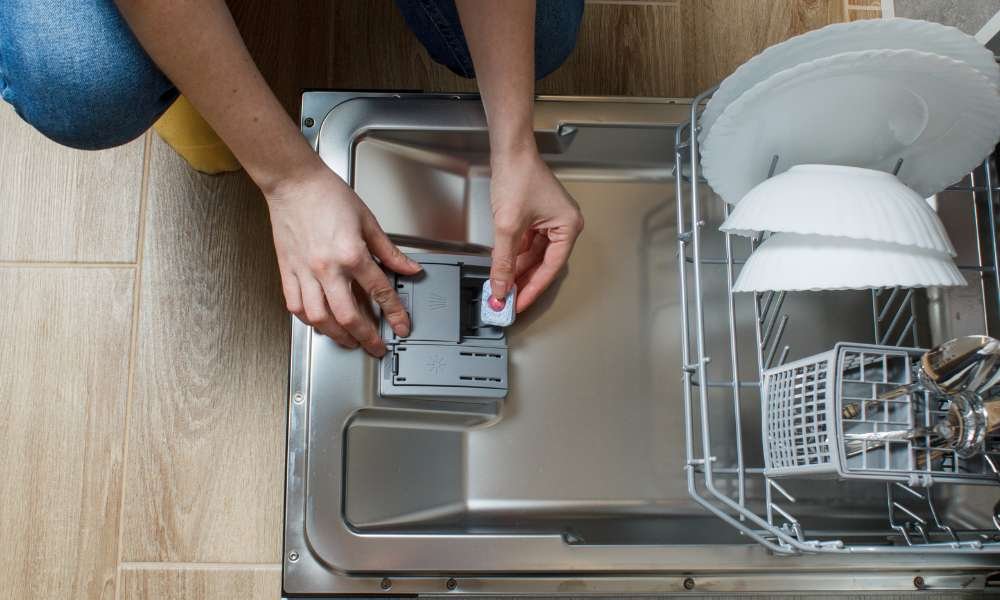Discovering water in the bottom of your dishwasher when not in use can be confusing and even a little alarming. Many people assume that a dishwashers should always be completely dry unless it’s in the middle of a wash cycle. But when you find standing water sitting inside the unit, especially hours or days after use, it could be a sign that something’s not working as it should. While this may not always mean there’s a major problem, It’s important to understand the potential causes so You can fix it quickly and avoid long-term damage.
What It Means When You Find Water in the Bottom of Your Dishwasher When Not in Use
Finding water in your dishwashers when it hasn’t been recently used typically indicates a drainage issue. This can range from minor maintenance needs to more serious mechanical problems. Dishwashers are designed to drain completely after each cycle. When they don’t, leftover water can create musty smells, encourage mold growth, or even result in dirty dishes despite a completed wash cycle. Understanding the cause is the first step toward resolving the issue.
Is It Normal to Have Water Left in the Dishwasher?
A small amount of water—like a thin puddle under the filter—can sometimes be considered normal, especially if the dishwasher was just used. This residual Aqua helps keep seals moist and prevents them from drying out. However, if you see a noticeable pool of water or if the Aqua appears dirty, cloudy, or smells bad, that’s a clear signal that something isn’t functioning correctly and requires your attention.
Common Causes of Water in Bottom of Dishwasher When Not in Use
There are several common reasons your dishwasher may retain water when it should be completely dry. These include blockages in the filter or hose, issues with valves or pumps, or even improper installation of drainage components. In some cases, Aqua may even be backing up from the kitchen sink or garbage disposal. Identifying the right cause can save you from unnecessary repairs and expenses.
Clogged or Partially Blocked Dishwasher Filter
One of the most frequent culprits is a clogged filter. Over time, food particles, grease, and debris can accumulate in the dishwasher’s filter, preventing water from draining properly. When the filter is blocked, it traps water at the bottom of the machine. Cleaning the filter regularly—ideally once a month—can help maintain proper drainage and improve your dishwasher’s overall performance.
How a Faulty Check Valve Can Lead to Water Buildup
The check valve in your dishwasher plays an important role in allowing water to flow out while preventing it from flowing back in. If this valve is damaged or stuck, dirty Aqua from the drain line can re-enter the dishwasher, leading to standing Aqua at the bottom. Replacing a malfunctioning check valve is a relatively straightforward fix and can make a big difference in preventing water from returning to your appliance.
Blocked or Improperly Installed Drain Hose
A drain hose that is either kinked, blocked, or incorrectly installed can restrict water from exiting the dishwasher. If the hose is too long, loops too low, or lacks a proper high loop or air gap, it may allow dirty water to flow back into the unit. Inspecting and correcting hose placement can restore proper drainage and prevent future backups.
Garbage Disposal Connection Issues
If your dishwasher drains into the garbage disposal, a clogged or uncleaned disposal can block the flow of water. Food remnants stuck inside the disposal may prevent proper drainage from the dishwasher. Regularly running your disposal with cold Aqua and clearing any blockages can help ensure that your dishwashers has a clear path to drain excess water effectively.
Why a Malfunctioning Drain Pump Could Be the Culprit
Your dishwasher’s drain pump is responsible for pushing used Aqua out during the wash cycle. If the pump motor is weak or has failed, the water may not be expelled as it should, resulting in standing water even when the dishwasher is off. Unusual noises during operation or water that never drains fully are signs that the drain pump may need repair or replacement.
Backflow From the Sink: How Plumbing Plays a Role
In some homes, improper plumbing setup can cause backflow from the sink to enter the dishwasher. This is particularly true if there is no air gap or high loop installed in the drain line. When Aqua from the sink is flushed out, it may flow backward into the dishwashers if the systems are interconnected. Ensuring proper plumbing configurations can prevent cross-contamination and eliminate unexpected water in your appliance.
Step-by-Step: How to Troubleshoot Water in the Bottom of Dishwasher When Not in Use
Turn Off Power and Remove Standing Water
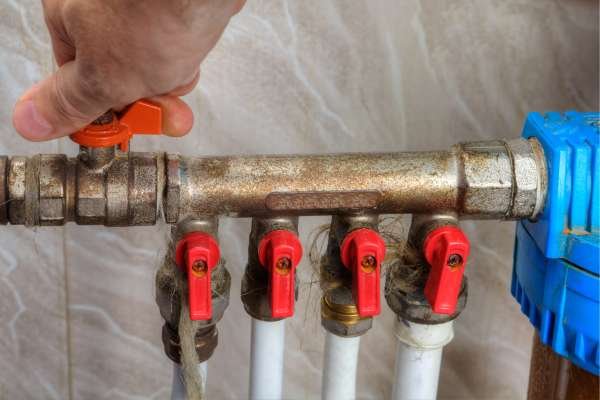
Before doing anything inside your dishwasher, safety should come first. Unplug the appliance or turn off the circuit breaker that powers it to avoid electrical accidents. Once that’s done, grab a cup or sponge to scoop out any standing Aqua from the bottom of the unit. Removing the water will make it easier to inspect internal parts and prevent further mess during the troubleshooting process.
Inspect and Clean the Filter
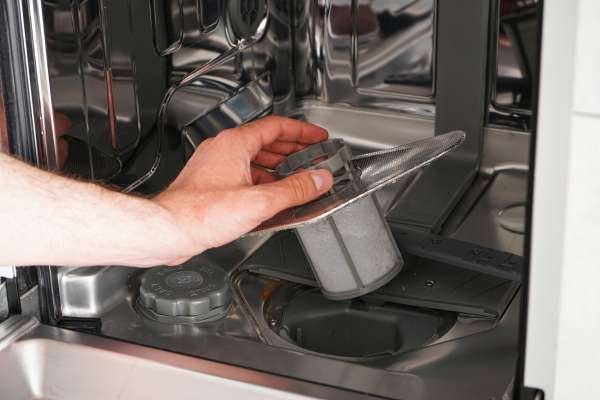
The filter is a common culprit when it comes to drainage problems. It traps food particles and debris, which can lead to clogs over time. Remove the bottom rack and twist out the filter located beneath the spray arm. Give it a thorough cleaning under warm Aqua using a soft brush. If the filter is heavily clogged, this could very well be the reason for the water buildup, and cleaning it may immediately solve the problem.
Check the Drain Hose for Kinks or Clogs
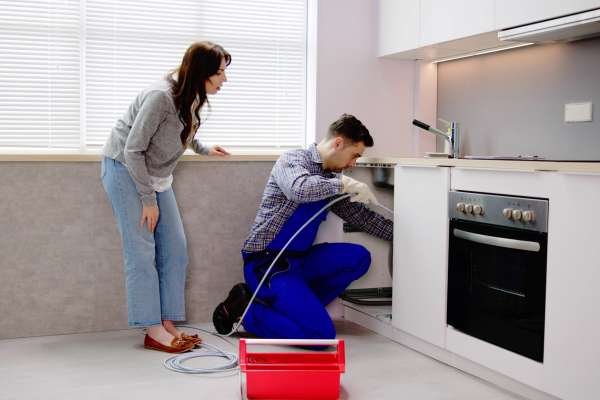
The drain hose carries wastewater out of the dishwasher, and if it’s kinked, clogged, or improperly positioned, the water won’t drain properly. Pull the dishwashers out slightly to access the hose (usually located at the back), and check for any bends or blockages. You can detach the hose and run Aqua through it to see if it flows freely. Make sure it’s reinstalled in a looped or elevated position to prevent backflow.
Examine the Check Valve and Drain Pump

The check valve is designed to let water flow in only one direction—out. If it’s stuck or damaged, dirty Aqua may re-enter the dishwasher. Locate the valve near the drain pump (you may need your user manual for this), and check for debris or signs of wear. Similarly, inspect the drain pump for blockages or damage. If the pump hums but doesn’t pump water, it might need to be replaced. These components are essential for moving Aqua out of the dishwasher effectively.
Test the Garbage Disposal Connection
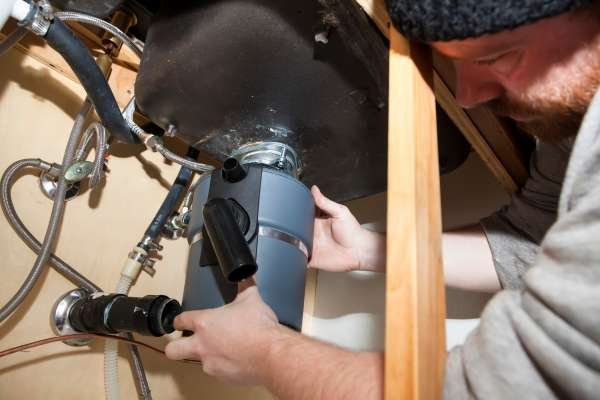
If your dishwasher is connected to a garbage disposal, food clogs inside the disposal can prevent water from draining out of the dishwasher. Run the disposal to clear any blockages, and check that the knockout plug (if your disposal is newly installed) has been removed from the port where the dishwashers connects. A blocked or improperly installed disposal connection can create a bottleneck that pushes water back into your dishwasher.
Run a Diagnostic Cycle if Your Model Allows
Many newer dishwashers have a diagnostic or test mode that can help you identify hidden issues. Refer to your user manual to see if your model includes this feature and how to activate it. A diagnostic cycle can test sensors, pumps, and valves and may even display error codes that point directly to the problem. This feature can save you time and pinpoint the exact cause of the water buildup without a full manual inspection.
When to Call a Professional Appliance Technician
If you’ve cleaned the filter, checked the drain hose, inspected the check valve, and even run a diagnostic cycle without resolving the issue, it may be time to call a professional appliance technician. Continued water accumulation could point to deeper electrical faults, motor problems, or internal leaks that require specialized tools and knowledge to fix. Additionally, if you notice electrical smells, leaks under the unit, or recurring error codes, don’t delay—professional help can prevent costly Aqua damage and ensure your dishwasher is safe to use.
Prevention Tips to Avoid Future Water Accumulation
Preventing standing water in your dishwasher starts with simple habits and regular upkeep. Always scrape off excess food before loading dishes to reduce debris buildup. Run hot Aqua in your sink for a few seconds before starting a cycle—this helps the dishwashers begin with hot Aqua immediately, improving its efficiency. Also, avoid overloading the racks, as this can block water flow and drainage during cycles.
Simple Maintenance Habits That Keep Your Dishwasher Running Smoothly
Routine maintenance is the key to a long-lasting, trouble-free dishwasher. Clean the filter monthly, inspect and wipe down the door seals, and occasionally pour a cup of white vinegar into the bottom of the unit to reduce mineral buildup and odors. Running an empty cycle with baking soda can also help deodorize and maintain cleanliness. These small habits can make a big difference in preventing drainage problems and keeping your dishwashers in top shape.
The Role of Dishwasher Detergent and Rinse Aid in Water Drainage
Surprisingly, the type of detergent and rinse aid you use can influence how well your dishwasher drains. Low-quality or excessive detergent may create too many suds, which can interfere with drainage. Rinse aid, on the other hand, helps Aqua slide off dishes and internal surfaces more efficiently, preventing pooling. Always follow the manufacturer’s recommendations for detergent type and quantity to avoid buildup that might clog components over time.
How to Tell If Your Dishwasher’s Plumbing Needs an Upgrade
Sometimes the problem lies outside the dishwashers itself. Outdated or incorrectly installed plumbing—especially if your dishwashers share a drain with the sink or garbage disposal—can lead to recurring backflow issues. If you’ve had multiple dishwasher drainage problems, or notice slow draining in the kitchen sink, it might be time to consult a plumber about upgrading your drainage lines or installing an air gap to improve overall Aqua flow.
Long-Term Risks of Ignoring Standing Water in Your Dishwasher
Ignoring standing water in your dishwasher can lead to more than just a smelly kitchen. Over time, stagnant Aqua can promote mold growth, rust internal components, and damage the motor or electrical parts. It can also lead to foul odors that are difficult to eliminate. More importantly, dirty Aqua that sits in the appliance poses a hygiene risk and reduces the effectiveness of your dishwasher, leaving your dishes less than clean.
Eco-Friendly Solutions for Maintaining a Healthy Dishwasher System
If you prefer green living, there are several eco-friendly ways to keep your dishwashers running smoothly. Clean with natural products like baking soda and vinegar, use plant-based detergents, and avoid harsh chemical cleaners that may damage seals and hoses. Installing a water softener can also reduce mineral buildup in hard Aqua areas, improving performance without relying on chemicals.
Final Thoughts
Finding Aqua in the bottom of your dishwasher when not in use can be alarming, but it doesn’t have to mean disaster. With a bit of regular care, attention to detail, and the willingness to seek professional help when needed, you can resolve the issue and extend the life of your appliance. By following preventive tips and embracing good maintenance habits, you’ll enjoy cleaner dishes and a more efficient kitchen routine for years to come.
